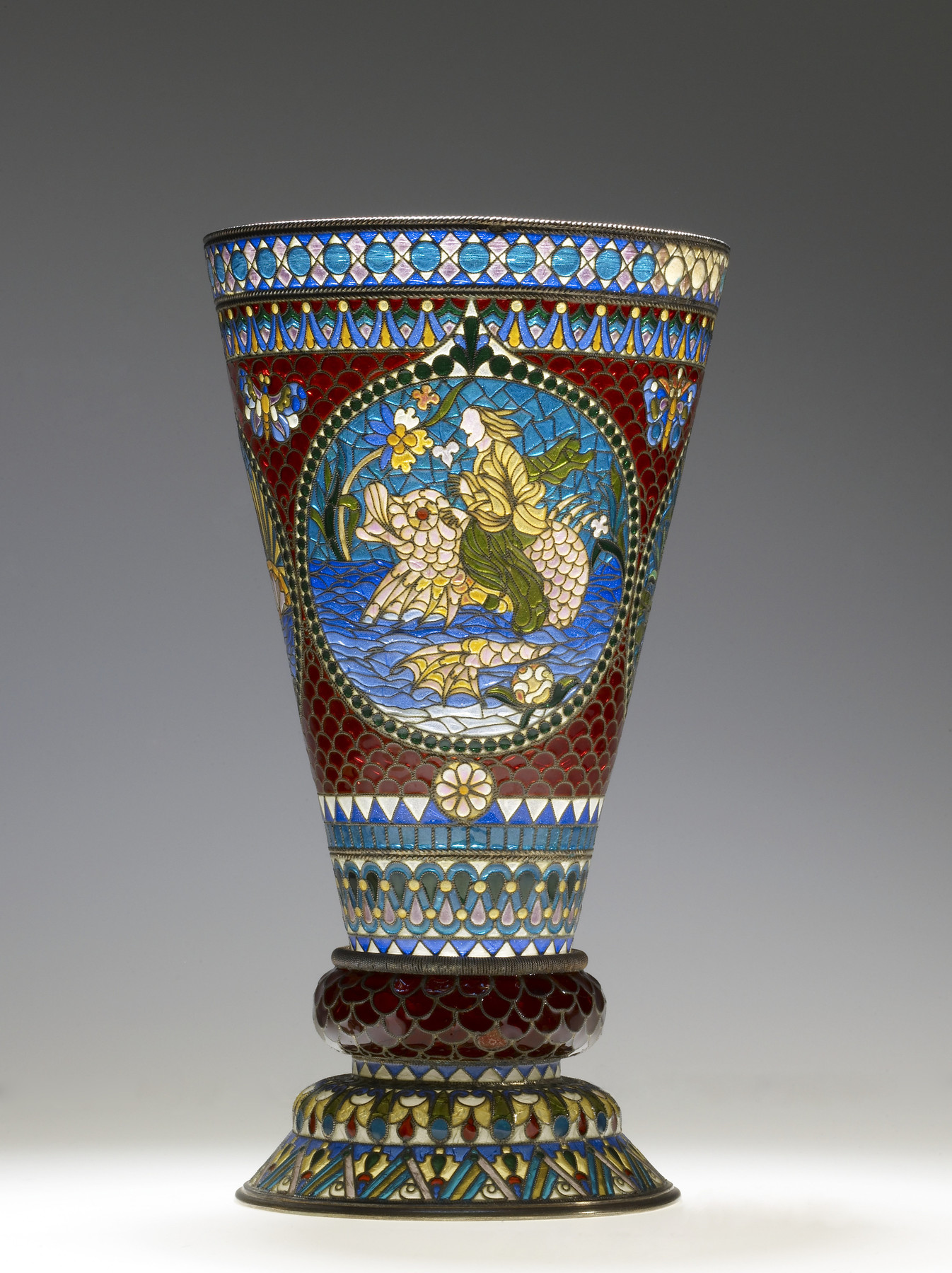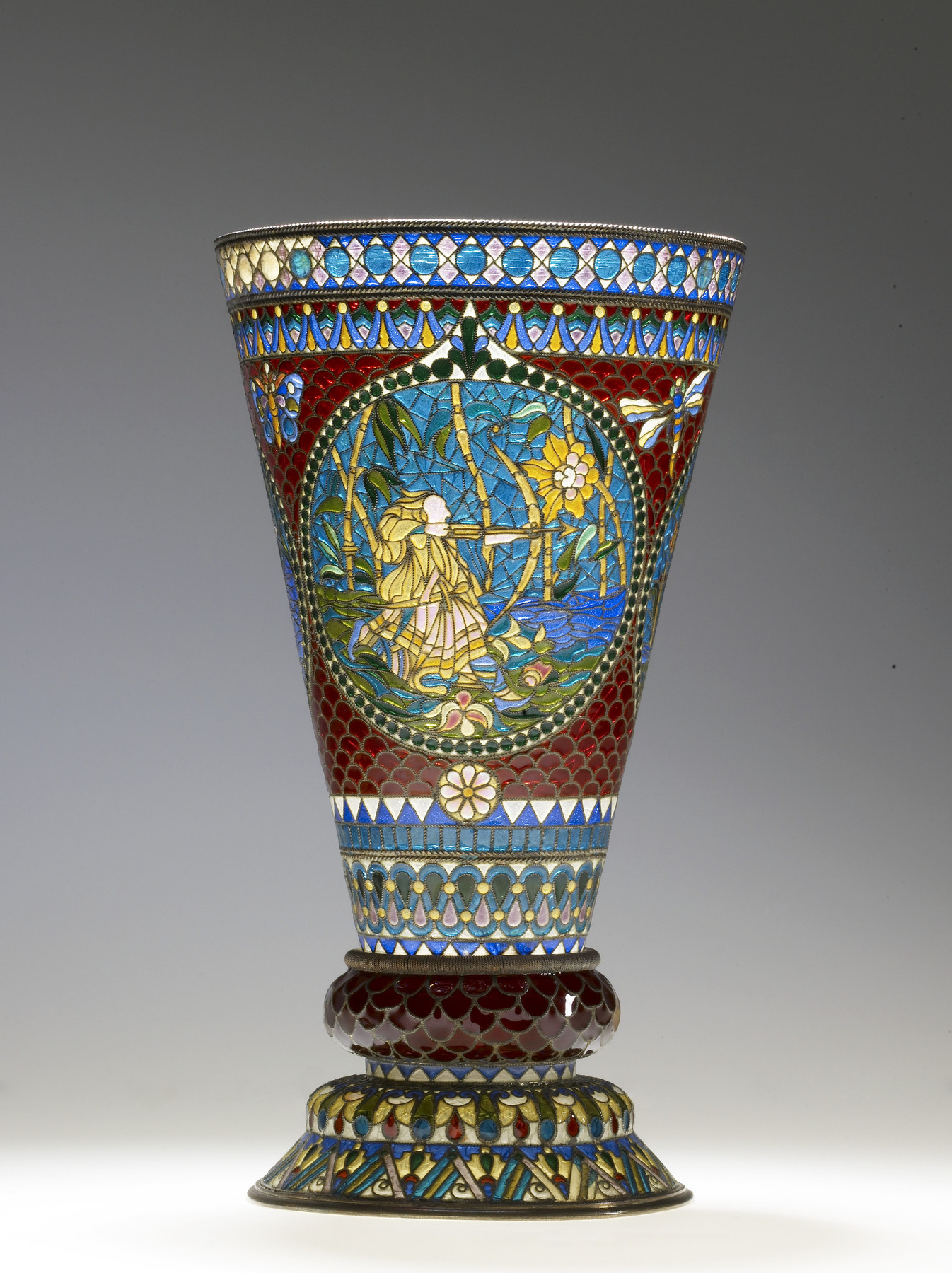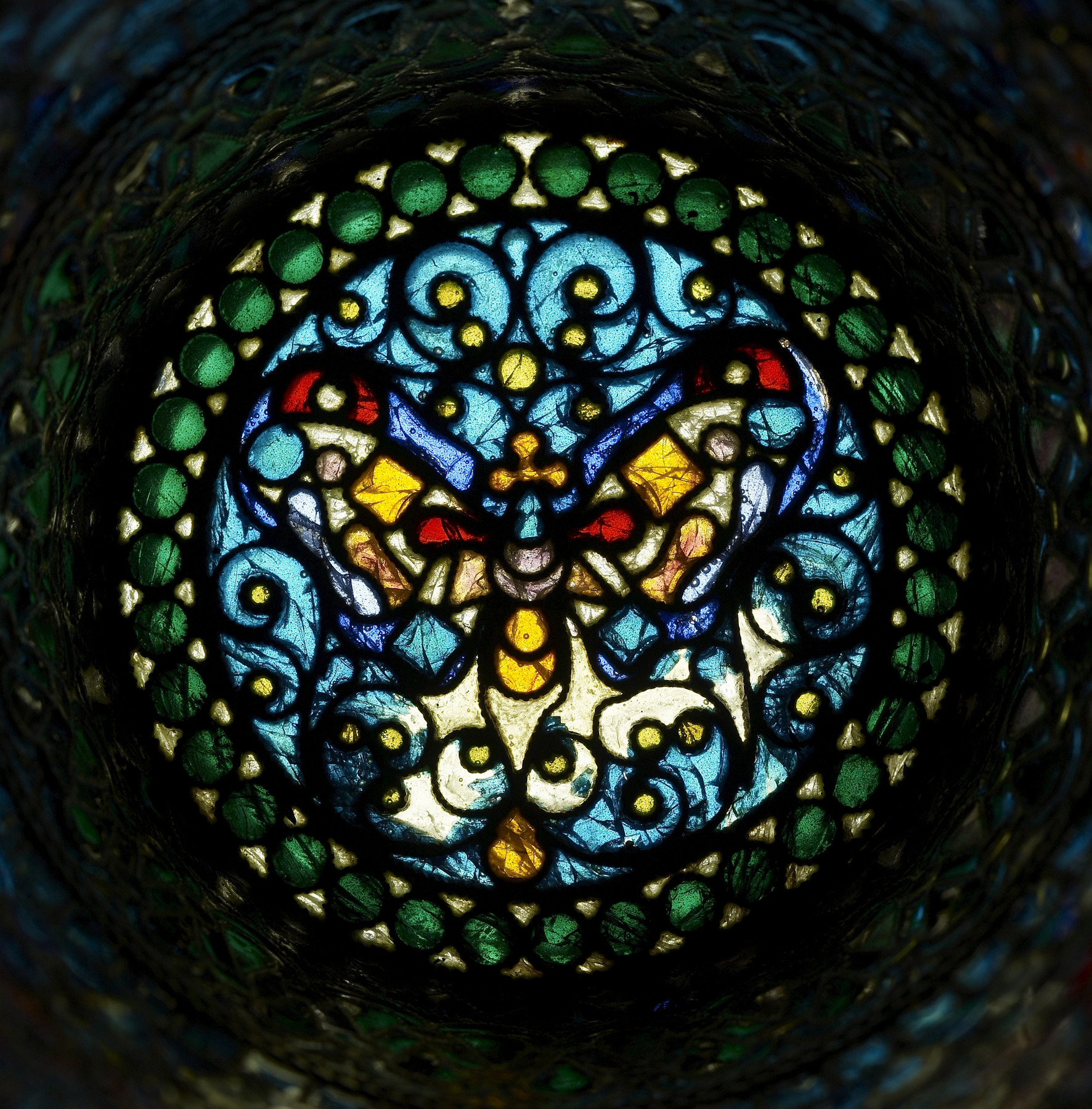Beaker
(18th and 19th Centuries )
This tall beaker, executed entirely in plique-a-jour enamel, was manufactured in two sections and assembled. The upper portion consists of the bowl with flaring sides, and the lower, a bulbous section and the base. Three medallions, terminating at their tops with ogee-arches, have been incorporated into the beaker's walls. Portrayed within them is a figure in a floral setting; a white stork wading in a pond at sunset; a woman on the back of a sea monster, and an archer in a woodland. The medallions are framed by row of green circles on a white ground. Two butterflies and a dragon fly appear in the interstices. Another butterfly appears in the base. There are two decorative bands circumscribing the top of the walls and four bands of geometric design along the bottom of the bowl section, which is otherwise rendered in crimson red, plique-à-jour enamel in a scale pattern. The bulbous section is also in a red scale pattern, and the foot is circumscribed by two bands of abstract decoration.
Inscription
Provenance
Provenance (from the French provenir, 'to come from/forth') is the chronology of the ownership, custody, or location of a historical object. Learn more about provenance at the Walters.
Jean M. Riddell, Washington, D.C. [date and mode of acquisition unknown]; Walters Art Museum, 2010, by bequest.
Exhibitions
| 2017-2018 | Fabergé and the Russian Crafts Tradition: An Empire's Legacy . The Walters Art Museum, Baltimore. |
Geographies
Russia, Moscow (Place of Origin)
Measurements
Overall H: 9 13/16 × Diam: 5 7/16 in. (25 × 13.8 cm)
Credit Line
Bequest of Mrs. Jean M. Riddell, 2010
Location in Museum
Not on view
Accession Number
In libraries, galleries, museums, and archives, an accession number is a unique identifier assigned to each object in the collection.
In libraries, galleries, museums, and archives, an accession number is a unique identifier assigned to each object in the collection.
44.778








